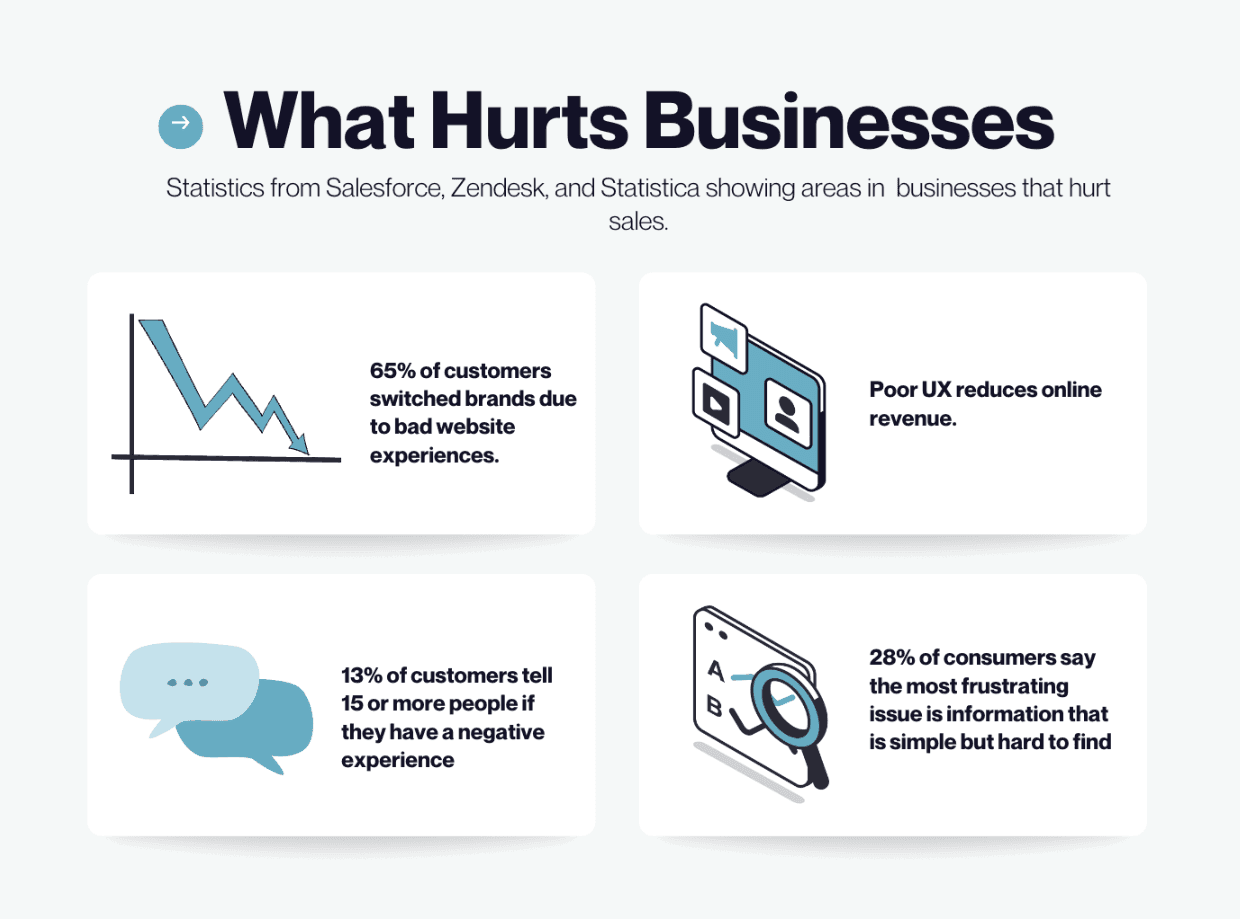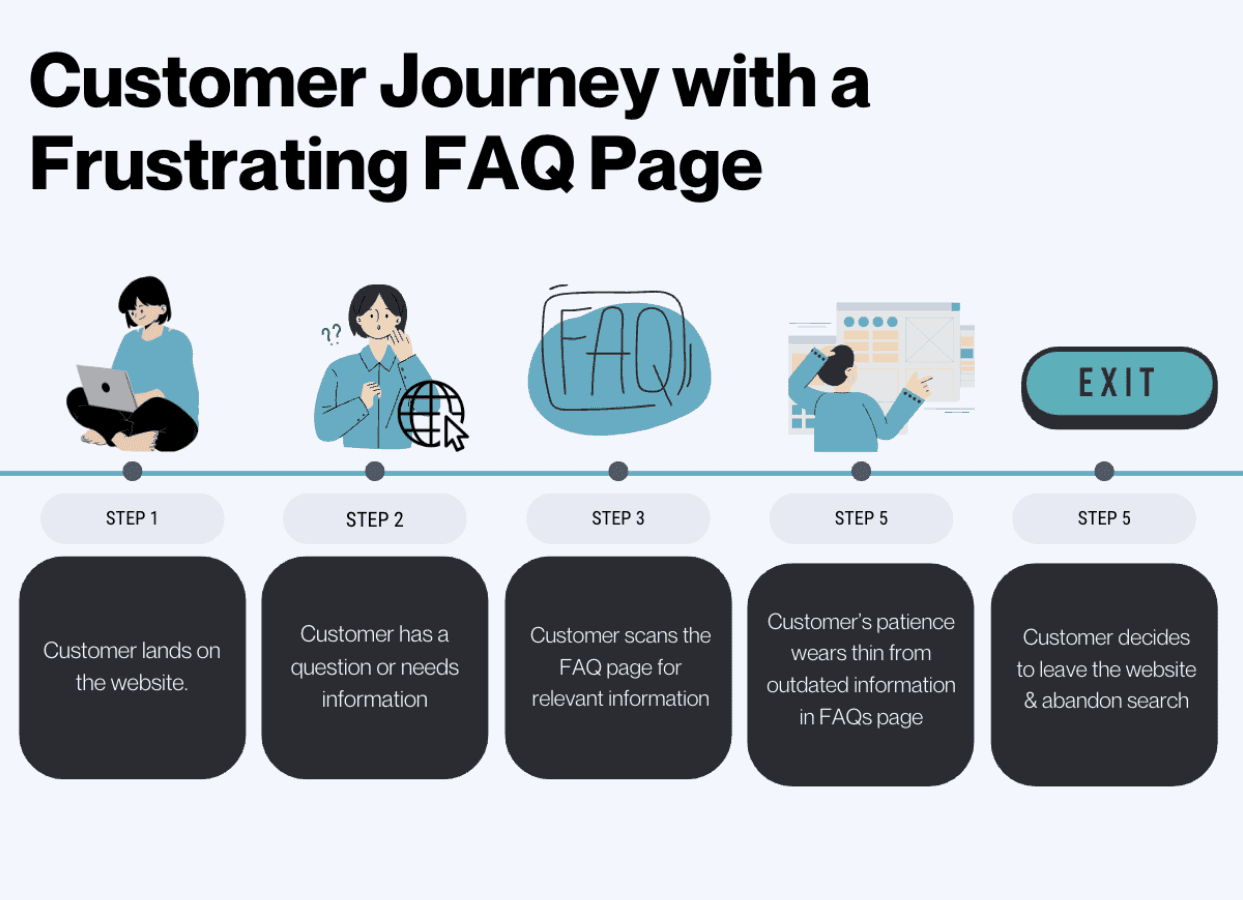5 Reasons Why Traditional FAQs Won't Work in 2024
Are we done for good with traditional FAQs in 2024? Unfortunately, yes.
If you are still relying on those old-school FAQs to answer your customers' burning questions, it's time for a serious upgrade. In this digital age, customers expect more than just a list of frequently asked questions. They want quick, relevant, and engaging answers.
So, why are traditional FAQs falling short?
Why Companies Love FAQs (But They Shouldn't)
Let's face it: FAQs are easy. They're like the lazy person's content strategy: just jot down a question and an answer, and voila! You've got a piece of content. But this simplicity often leads to a few pitfalls.
FAQs become a dumping ground. Not sure where to put that random piece of information? Stick it in an FAQ!
They're often irrelevant. Thought of a question one person might ask in a million years? Let's add it to the FAQ page, just in case.
They can be frustrating for users. Some FAQs are so specific that they're only helpful to a handful of people.
Personalization is a game-changer in marketing. 89% of marketers see increased ROI from personalized campaigns. FAQs should be goldmines for this opportunity. Unfortunately, traditional FAQs fail to deliver this point of personalization necessary in today's marketing landscape.
And let's remember that some companies have trained their users to rely on FAQs. But that should be the case, especially now in 2024.
5 Reasons Why Traditional FAQs Are Ineffective

Figure 1. Statistics and data showing common business pain points
Before we get to the bottom of the issue, here’s a look at some of the common pain points businesses encounter that ultimately hurt their sales and marketing. While shocking as it seems, your Traditional FAQs can contribute to these issues.
Here are the top reasons why:
Traditional FAQs are Too Slow
In today's fast-paced digital world, where users demand immediate answers, traditional FAQs are increasingly becoming a relic of the past. While they once served as a convenient tool for organizing information, their limitations are now more apparent than ever.
Reader Fatigue: FAQs often require users to scan through multiple questions before finding the relevant answer. This can lead to frustration and a loss of interest.
Slow Information Retrieval: The question-and-answer format can make it difficult for users to quickly identify the information they need, especially if they have a specific query.
Reduced Scannability: The lack of frontloading can make it more difficult for users to scan through the content and understand the main points quickly.
Research has shown that websites with prominently displayed FAQs often have higher bounce rates, indicating that users are frustrated with the format.
Traditional FAQs Struggle Outdated Information
Traditional FAQs are often viewed as a one-stop shop for definitive answers, but this perception can be misleading. FAQs are static documents that can quickly become outdated, potentially leading to user confusion and misinformation.
As FAQs proliferate across various platforms, the risk of inconsistencies increases. When information is duplicated without regular updates, it can create a patchwork of conflicting data, leading to miscommunication, diminished trust, and even legal consequences.
According to Forrester, many consumers will likely cease doing business with a brand after a single negative experience. This underscores the critical importance of automation along with accurate and up-to-date information.
Traditional FAQs Duplicate Content
One of the most significant issues with standard FAQ formats is content duplication. Many organizations believe that providing information in a Q&A format allows users to locate answers more quickly. However, if users frequently ask the same questions, it indicates a deeper issue: the need for better content organization.
A study from Search Engine Journal found that users prefer direct answers over multiple links to FAQs when seeking information. This suggests that simply repeating information in a different format does not effectively address user needs.
Instead, businesses should focus on structuring their existing content in a clear and accessible way, eliminating the need for redundant pages.
5. Traditional FAQs are Headaches for Navigation
Traditional FAQs, while intended to provide helpful information, can inadvertently create a frustrating user experience that negatively impacts online revenue. By prioritizing content organization over task completion, FAQs often hinder navigation and impede users' ability to quickly find what they need.
FAQs force users to sift through information organized by type rather than purpose. This can lead to confusion, frustration, and increased bounce rates, ultimately resulting in lost revenue.
When users struggle to navigate a website, they are more likely to abandon their search and seek information elsewhere. This can have a significant impact on conversion rates and overall sales.
Traditional FAQs Affect Website SEO
The problem of duplication extends to search engine results as well. When multiple pages with similar content compete for visibility, it not only confuses users but also dilutes the effectiveness of your SEO efforts.
75% of users never scroll past the first page of search results. If your site contains duplicate content, you risk losing valuable traffic to your own pages, undermining both user experience and site efficiency.
Then, there’s the problem of Limited Keyword Placement. The question format restricts the placement of keywords at the beginning of sentences or paragraphs, making it harder for search engines and users to find relevant information.
Also read Customer Self-Service: A Comprehensive Toolkit for Businesses
Why a Bad FAQ Can Drive Customers Away

Figure 2. Customer’s website journey showing how bad FAQs can affect user experience
Imagine you're shopping online for a new pair of sneakers. You land on a website that has everything you need. Excited, you click on the "FAQ" section, hoping to find answers to your questions about sizing, shipping, or returns.
Scrolling through the page, you're met with a jumbled mess of questions and answers. Some are too long and complicated, while others are outdated and incomplete. Frustration starts to set in.
Eventually, your patience wears thin. You close the tab, feeling defeated and annoyed. Your shopping trip has ended abruptly, all because of a poorly designed FAQ page.
This is a common scenario for many online businesses. A frustrating FAQ page that is not leveraging on AI in marketing can drive customers away, damage a brand's reputation, and ultimately hurt sales.
The Alternative
The solution lies in dynamic, AI-powered customer support tools that adapt to customer needs in real-time. Rather than static, one-size-fits-all answers, businesses can implement dynamic FAQ pages, interactive knowledge bases, and smart AI-powered widgets like Frequentli.ai.
Dynamic FAQ pages update based on actual customer queries, ensuring the content stays relevant. Interactive knowledge bases allow users to explore in-depth answers, often guiding them through complex problems more efficiently.
AI-powered widgets like Frequentli.ai offer a personalized experience by analyzing user behavior, suggesting the most relevant answers, and even learning from past interactions to become more intuitive.
Ready to upgrade your FAQ strategy?
Don't let outdated FAQs hold your business back. Be one of the first to experience the future of customer service. Talk to us today!
